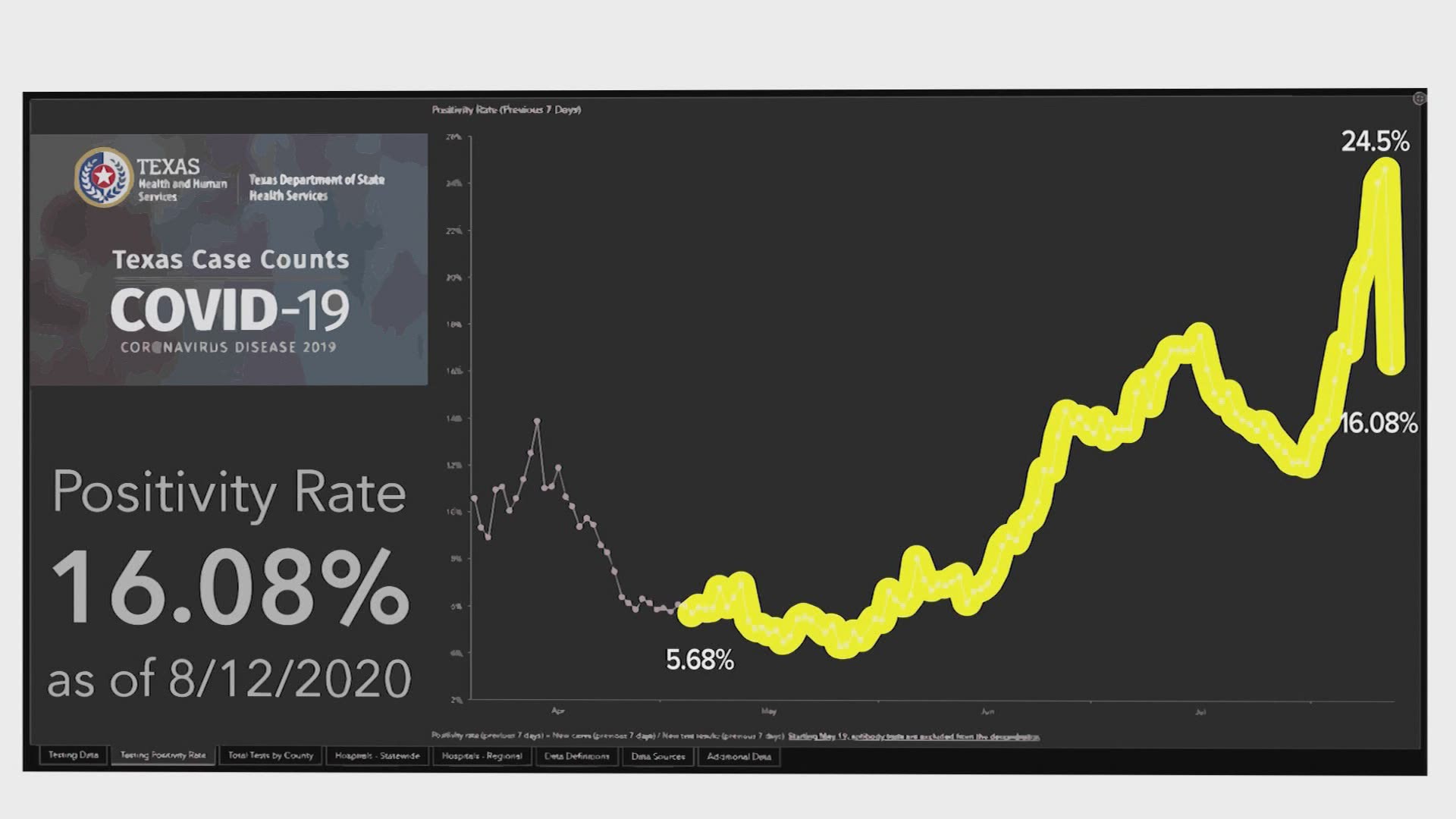DALLAS — Gov. Greg Abbott said Thursday the Texas Department of State Health Services had brought in a “data team” to determine why the positivity rate of COVID-19 tests spiked to record levels in the first two weeks of August, reaching 24.5% on Wednesday.
The positivity rate is the percentage of COVID tests that come back positive. The higher the percentage, the more alarming to public health experts.
Abbott has previously said he would consider a positivity rate of above 10% a red flag for spread of the coronavirus in Texas.
When he announced the reopening of Texas in late April, after a month-long shutdown of many businesses, the positivity rate was around 5%.
It steadily increased from mid-June through mid-July, reaching a high of 17.4% on July 16, then decreasing to 12% by the end of the month.
But on August 1, the positivity rate began a rapid two-week ascent.
DSHS press officer Lara Anton said the data experts discovered that a computer upgrade performed Aug. 1 meant multiple positives were uploaded to the state’s lab reporting system.
The data experts also discovered coding errors from one hospital lab and one commercial lab in the state.
Once those errors were resolved, tests from those sites were uploaded.
The resulting artificially high positivity rate could have been troubling for businesses.
Abbott said Thursday the positivity rate needed to “go back below 10% for a sustained period of time,” before he would consider reopening additional businesses.
The positivity rate fell to 16% Thursday and remained there on Friday.
The governor also said a decrease in demand for testing across the state has impacted the positivity rate.
When only people who feel sick are getting tested, the percentage of positives is likely to be higher.
According to Dallas County Judge Clay Jenkins, most testing sites in the county are seeing fewer people.
He said Eastfield College is averaging about 200 tests per day – far below its 500-test capacity.
Capacity at Ellis Davis Field House is 1,000 per day and that hasn’t been met in a while, Jenkins said.
Dallas County Director of Health and Human Services Dr. Phillip Huang said he’s not surprised by data processing issues being experienced by public health tracking systems.
“We are still dealing with paper faxes of lab data and lab reports - hundreds of those a day that we’re having to deal with,” Huang said.
“The systems have not really been designed to handle this many numbers,” he said. “It’s an unprecedented situation we’re dealing with.”
According to Anton, the state expects the positivity rate to “generally be higher until testing demand increases and the backlog of cases smooth out.”
She did not give a timeline for when that might happen.
Huang said it is important to focus on trends from multiple data points, like hospitalizations and ER visits as well as the positivity rate.
“Data shows us what’s going on in our community - the spread, which populations it is affecting, what geographic areas are being most affected - all those things rely on the data,” he said.
“There’s not going to be perfect data, but we need to get as good clean data as we can.”


